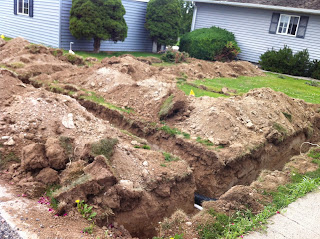Spring, First Signs
IN THE VINEYARD: Buds begin to swell,
budbreak, and the vines begin to show the new season’s green. Cover crop and
grasses begin to grow and surrounding orchards bloom.
IN THE CELLAR: Bottling wines for
summer wine releases (fresh and fruity white wines, dry roses) and young reds
for fall release. Warmer temperatures encourage the red wine barrels to complete
their secondary, or “malolactic” fermentation.
Summer, Grow Grow Grow
IN THE VINEYARD: Vines flower and
their delicate scent perfumes the air. Grape clusters “set” and begin to show
this vintage’s crop. Winemakers take advantage of the warm weather to check out
the upcoming crop in the vineyard.
Red grapes color up after going
through “Veraison” and begin to soften and build grape sugars. Toward the end
of the summer, the varietal flavors are apparent and sampling for harvest
maturity begins.
Fall, The Action Begins
IN THE VINEYARD: Harvest begins! The
entire year’s crop will be harvested between September and November. If you’re
lucky, you can see some of the activity and share in the excitement of a new
vintage.
IN THE CELLAR: Fermentation turns the
cellar into its own “aroma-therapy” center. Yeasty, fruity and delicious aromas
are everywhere.
Winter, Peace & Quiet
IN THE VINEYARD: Frost generally drops
the last leaves off the vines, and they descent into dormancy for the winter.
The bare vine architecture is in stark contrast to the way they looked in
mid-summer with lush, green leaves.















































